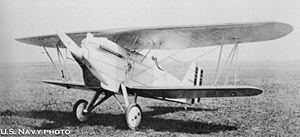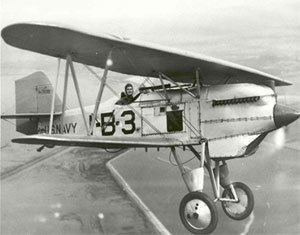Top speed 249 km/h Length 6.86 m First flight 1922 | Wingspan 11 m Introduced 1925 | |
 | ||
Manufacturer | ||
The Curtiss F6C Hawk was a late 1920s American naval biplane fighter aircraft. It was part of the long line of Curtiss Hawk airplanes built by the Curtiss Aeroplane and Motor Company for the American military.
Contents

Originally designed for land-based use, the Model 34C was virtually identical to the P-1 Hawk in United States Army Air Corps service. The United States Navy ordered nine, but as the sixth example was built it was strengthened for carrier-borne operations and redesignated as the Model 34D. Flown from the carriers Langley and Lexington from 1927–30, most of the later variants passed to Marine fighter-bomber units, while a few were flown for a time as twin-float seaplanes.

Operators

Variants

Specifications (F6C-4)
Data from United States Navy Aircraft since 1911
General characteristics

Performance

Armament
